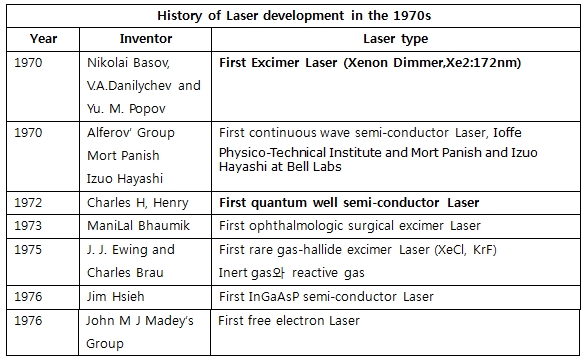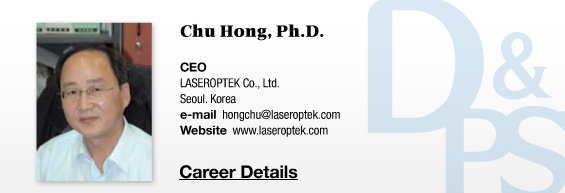The period between the 1960s and 1970s is considered the dark ages for medical Laser. Goldman had already reported that selective destruction of blood vessels and pigments was possible using Laser. However, as shown in <Table 1>, more sophisticated Laser devices and supportive equipment had to be developed for effective selective treatment. For example, the pulse duration of a CO2 Laser needs to be adjusted to minimize thermal damage to the surrounding tissues. But this was not easy with the technology available at this time. Moreover, accurate delivery of Laser beams to the target required precision equipment such as articulated arm or hollow waveguide as well as aiming beam. However, these devices were yet to be developed and clinical research failed to see much progress. On the other hand, a few pioneers still managed to make valuable progress. I believe dermatologists and plastic surgeons who pioneered and succeeded in new indications of Laser therapy such as hair transplantation, liposuction and varicose veins (sclerotherapy) are leading the field of aesthetic Laser therapy.

Table 1. History of Laser development in the 1970s.
Nine years after their development, CO2 Laser (10.6um) and argon Laser (488nm, 514nm) were commercialized in 1972 and started being used for vascular and pigmented lesions. The wavelength of argon Laser has high absorption in oxygenated hemoglobin and was useful in removal of port-wine stains, facial teleangiectasia and early rhinophyma, etc. Argon Laser was efficacious in port wine stain removal in adults whereas it brought side effects such as textural alteration, pigmentation and scarring in pediatric patients 12 years or younger. Therefore, it was not used in pediatric patients. For a while, argon Laser was regarded the gold standard for vascular lesion treatment in patients 12 years or older1-1,1. In the early 1980s, argon Laser was the most widely used Laser in port wine stains in the world. However, the pulsed dye Laser was introduced in the mid 1980s utilizing the concept of selective photothermolysis 1-3 and started gaining traction as the primary treatment of vascular lesions. This pushed the argon Laser out of the market. The interesting aspect is that the very costly argon Laser, along with CO2 Laser, was used in thermal cautery from the 1970s to mid 1980s. During this time, Laser was not used to its full therapeutic potential.
HELIOSⅡ/LOTUSⅡ/HYPERION – Manufacturer: LASEROPTEK(www.laseroptek.com)
-To be continued-





















